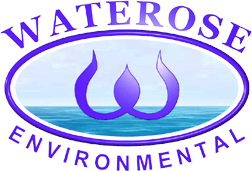 | ||||||
| Articles | Projects | Resume | Cartoons | Windsurfing | Paintings | Album |
Coastal Zone Management
Sustainable Development in Sooke, B.C.
Reducing Traffic Congestion and Enhancing Land-use Patterns
by Waterose
Index:
Section 1. Introduction:
The Western Communities (WC) are a desirable place to live because of the large amounts of green space and ocean front property which people associate with a high quality of life. Consequently, a portion of the population in the Capital Regional District (CRD) is immigrating to the WC and most notably to Sooke.Sooke is situated on porous glacial till soils above the magnificent Sooke Basin which affords the highest possible quality of life in any of the WC’s. The basin has both high recreational value and ecological value. This is a marine basin that is an ecologically sensitive area that is used by local waterfowl, marine shellfish, otters and salmon. The basin is fed by numerous salmon bearing streams and has several salt marsh estuaries. The treed foreshore is used by deer, local residents, and tourists.
The primary issue of concern is the increasing amount of vehicular traffic commuting into the CRD city core from Sooke. There is no doubt that our ‘carbonised’ culture contributes to climate change and poor air quality (Dauncey, 1998). The only transportation corridor from Sooke into the CRD is the single lane Sooke highway which is heavily congested during commuting hours. There is an alarming increase in the incidence of road kill to deer and other animals, including wildlife and domestic pets. Furthermore, the number of tragic fatalities to humans in automobile accidents on this road is increasing.
In addition to the increasing number of visible fatalities, there are invisible hazards to human health. The heavy use of the highway by automobiles and commercial vehicles adds chemicals to the atmosphere from the exhaust emissions that are harmful to human health and to the environment. These include carbon dioxide, nitrous oxides, sulphur oxides, and fine particulate matter. These chemicals contribute to global warming, and the reduction in the protective ozone layer.
Similarly, the heavy use of vehicles has a serious impact on the environment by the consumption of fossil fuels and the leakage of toxic fluids, such as oils and gasoline, from vehicles into the environment. These fluids enter the ground water during periods of precipitation and ultimately enter the Sooke Basin through the porous soils.
The issue is two-fold. The increasing growth rate in Sooke and the increasing use of vehicles in the Sooke area both contribute to the hazards to human health and to the environment.
Section 2. Solutions for Sooke:
2.1 Transportation:
2.1.1 Island Highway
The island highway should not be enhanced, widened, or modified in any way. The construction of wide express lanes increases the perceived safe speed limit and reduces the aesthetic value of the narrow green highway corridor.2.1.2 Commuter Bus Services:
The construction of the parking lot and bus shelter at Milnes Landing for use by commuters is commendable. However, the parking lot should be enhanced with drainage ditches and catchments for the collection and treatment of water runoff from the sealed pavement. This contaminated water can run off in pulses after rainfall events and enter the Sooke River estuary through the porous glacial till soils.The commuter bus service from Sooke to the CRD needs to be enhanced with the addition of more full size commuter express buses during peak periods, and the addition of more frequent mini-size buses during off-peak periods of travel.
2.1.3 Enhance Bicycle Use Program:
The Galloping Goose Trail (GGT) that runs from the Sooke Potholes to the CRD is an existing alternative transportation corridor from Sooke to the CRD. Sooke needs to construct a feeder bike trail from Sooke Centre that parallels the highway and directly connects to the GGT at the Fox Grill junction. Ideally, the enhanced trail connector should be treed and easily accessible from the highway.Sooke could adopt a Blue Bike Program similar to the successful program that operates in the CRD. This could be a volunteer based program. The Sooke council should install more bike racks at local points of gathering and use by the community, such as the City Centre, the baseball field and the arena.
2.1.4 Use of Vehicles:
The use of vehicles must be reduced. Two problems exacerbate the increasing number of vehicles per household and vehicle trips per household. These include commutes to the CRD and distances between homes and local community services. One possible solution is to use alternative fuel vehicles (AFV), such as those that use ethanol, electric, or hydrogen power, that reduce or eliminate the harmful emissions associated with the internal combustion engine (ICE). This is somewhat fallacious because this does not reduce the use of vehicles or alter the conditions that cause the need for the high use of vehicles. The existing regulations for emissions from ICE’s should be expanded to include commercial trucks, and should be more stringent for both domestic and commercial vehicles. A model example is the Air Care program in the Greater Vancouver Regional District (GVRD).
2.2 Socio-Economic Issues and Community Planning:
2.2.1 Economic Incentives to Reduce the Need to Commute:
The majority of commutes could be reduced by providing alternative methods of fulfilling employment objectives. A large portion of employment opportunities in the CRD is associated with blue collar jobs within the provincial government because Victoria is the capital of British Columbia. There are several options available to reduce the number of trips required on a weekly basis to venture to work. One option is to work flex hours with a four day work week. Another option is to telecommute, or to work electronically by computer networking. Employers could subsidise the procurement of the equipment that is required by employees to work out of their homes or employers could transfer the equipment from the downtown office location to the home office. Most people thrive in an environment with social contact so a work centre in Sooke that is designed for telecommuting office workers is another option. This would reduce commuter trips by employees and reduce costs to the employers to maintain large downtown offices.
2.2.2 Community Development:
On the local level, the community of Sooke is responsible for community planning and development on both a short term and a long term perspective. The recent pattern of development segregates the residential areas from the community services areas. There are several key problems associated with this trend in community development which is also seen elsewhere, such as in the Saanich area (Butterfield, 1998). First, this increases the number of vehicles and vehicle trips per household between the residential areas and the community services areas. Second, this increases the amount of traffic congestion on the main highway artery to the community services. Moreover, it increases the distance between members within the community. Furthermore, there are specific distinctions between the property values associated with each individual residential area that creates wide disparities within the community and demographics of the community.The Sooke Planning Committee should consider a more integrated approach to future developments that are in proximity to community services. These new communities should integrate a wide range of housing choices that include both family units and single units. A muti-tiered co-operative price structure would reduce disparity between individuals within the community and isolation of individuals on fixed incomes who are vulnerable to predation, such as the elderly. Examples of successful integrated communities include the sustainable community development of Sacramento and urban conservation in Philadelphia (Van der Ryn and Calthorpe).
Section 3. Conclusion:
The development and growth of Sooke is inevitable due to the irresistible quality of life that Sooke offers to people whom value green spaces and the quiet ocean village lifestyle. The influx of people and development has a significant impact on human health and safety, and the local environment. There are many options available to reduce the high use of vehicles and to increase efficient land use in the community.Sooke is one of the best kept secrets in the Western Communities, but not for long. Sooke planners have both the responsibility and the duty to create sustainable development of our community.
Section 4. References:
Written for Royal Roads University ES411 Sustainability Lecture Series:Towards New AlternativesButterfield, D. July 6, 1998. Seminar. “Sustainable Communities." ES411 Environmental Lecture Seminar Series: Towards New Alternatives. Royal Roads University. Victoria, B.C.
Dauncey, G. June 29, 1998. Seminar. “Climate Change." ES411 Environmental Lecture Seminar Series: Towards New Alternatives. Royal Roads University. Victoria, B.C.
Van der Ryn, S. and Calthorpe, P. “A New Design Synthesis for Cities, Suburbs, and Towns. Sustainable Communities.” Sierra Club Books. San Francisco. Pp 32.

 email Waterose
email Waterose
Please Sign My Guestbook
Please View My Guestbook

| Articles | Projects | Resume | Cartoons | Windsurfing | Paintings | Album |
 | ||||||